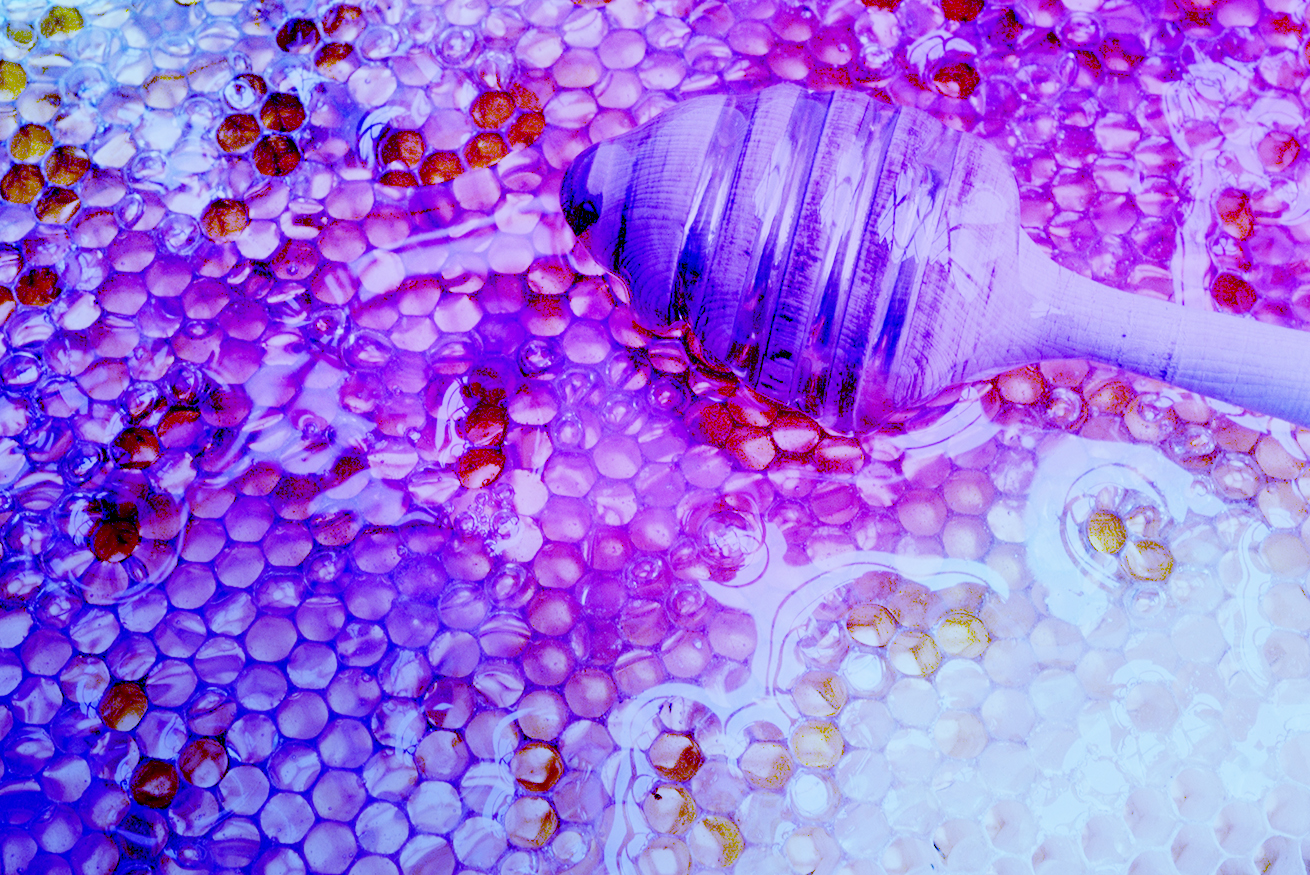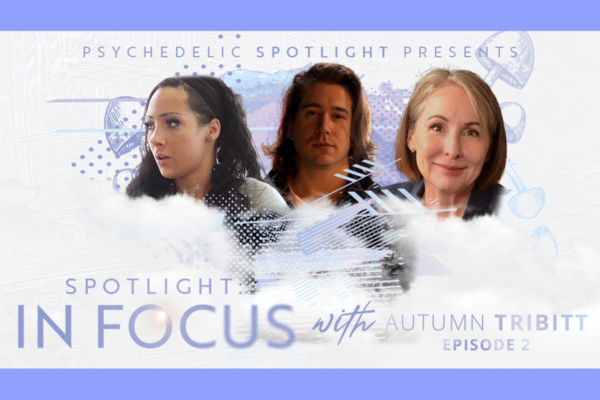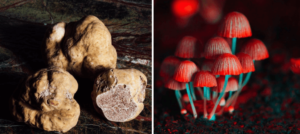
We know humans like getting high. But animals get just as tossed as we do. Remember the viral news clip of an intoxicated bear cub from last August? That bear was reportedly tripping on mad honey.
In case you missed it, an adorable little bear was found slumped over blankly staring at a mossy hillside in the Düzce National Park before Turkish officials placed her in a pickup truck and took her to the vet. There, vets confirmed she was stoned on deli bal, or “mad honey,” an intoxicating viscous goo made when bees pollinate on Rhododendron flowers. The bear fully recovered within three days and returned to the wild with more clout than most humans will gain in a lifetime. Her trip even earned her the nickname “Balkiz,” which means “honey girl” or “honey daughter” in Turkish. (The only other appropriate name would have been “Jer Bear,” obviously.)
Balkiz will undoubtedly go down as a hero in tripper history. The Guardian, Washington Post, People, the BBC, and Reuters covered her long strange trip, momentarily thrusting hallucinogenic honey into the mainstream for 24 hours. In that window, nearly half a dozen people sent me the story of sweet Balkiz, including my mom, who was curious if I knew where to get some mad honey. She was disappointed when I told her I didn’t. My interaction with her sent me down a rabbit hole to figure out where to procure mad honey, where it comes from, if it’s sustainable, and how it gets to people like you or me —or my mom.
A quick Google search populated dozens of online sellers allegedly slinging the amber-hued bee gloop, each claiming to be “pure” and “authentic” from Turkey or Nepal, the only two regions in the world where mad honey naturally occurs. But it’s disconcerting when the internet is your only lead for acquiring a drug, especially one you haven’t done before. Buying trippy honey online is the only option for consumers in the West because drug dealers don’t sell it. There’s no need for them to. Mad honey isn’t illegal in the US or most of the world (save for South Korea), despite its concentration of the psychoactive compound grayanotoxin. So it’s not subject to the same complexities as Schedule I drugs, such as scarcity and risk, changing the dynamics of buying and selling psychoactive substances altogether.
Real Mad Honey is a company based in Amsterdam that sells the trippy bee goo in minimalistic wooden jars with ’Real Mad Honey“ etched on the sides. Nick, the owner, said he became fascinated with the honey after watching Vice’s famed mini-documentary episode about the honey hunters of Nepal. In it, journalist and producer Abdullah Saeed travels to a remote village deep in Nepal’s Annapurna Massif, an area situated at the foothills of the Himalayas, to harvest mad honey with the Gurung, a community Indigenous to the mountains and hills of the region. Honey hunting is an ancient tradition for them, one that’s been passed down in their culture for hundreds, possibly thousands, of years.
Nick got his hands on some honey after seeing the doc and loved how it made him feel. ’I noticed there was no one selling it in Europe yet, only web shops in Nepal and Turkey,” he said. “So we thought we’d bring it to market in Europe ourselves… At first we only sold the Turkish mad honey because we had some problems importing from Nepal, but now we sell both variants.”
What’s the Difference Between Turkish and Himalayan Mad Honey?
The Himalayan mountains of Nepal and the Black Sea region of Turkey are the only places in the world where the phenomenon of mad honey occurs. Although, both countries have vastly different harvesting traditions. Beekeepers collect the honey in Turkey. They employ traditional beekeeping practices and use man-made hives, known as Langstroth hives, to create apiaries near Rhododendron fields, according to Archer, the owner of Himalayan Honey.
Conversely, harvesting Nepali bee nectar involves scaling daunting Himalayan cliff faces up to 9,800 feet using only a rope ladder. The Gurung honey hunters wear bee suits for protection while climbing, but their hands remain exposed to maintain the dexterity required to grip a long bamboo stick and pry a crescent-shaped hive off a cliff. While one person whacks a hive, a second climber catches it with a basket, dangling thousands of feet in the air and getting their hands relentlessly stung by livid bees. Consequently, mad honey from the Himalayas can be three times more expensive than Turkish mad honey.
Despite where the honey originates, one thing is sure: A confluence of natural elements must occur for mad honey to emerge. The first is specific wildflowers. Nepal and Turkey are home to a seldomly occurring species of Rhododendrons—Rhododendron luteum and Rhododendron ponticum —containing grayanotoxin, the neurotoxin in mad honey that makes people loopy.
Süleyman Türedi, a doctor who studies deli bal at the Karadeniz Technical University School of Medicine in Trabzon, Turkey, told Modern Farmer there are over 700 different species of Rhododendron flowers in the world. “To our knowledge, there are just two or three that include [significant amounts of] grayanotoxin in their nectars,” she said. And they just so happen to bloom in Turkey and Nepal.
The second thing you need to make mad honey is rare bees. The species of bee responsible for mad honey in Turkey is known as Apis mellifera caucasia, or the Caucasian honey bee, according to Archer. The species of bee in Nepal is known as Apis dorsata laboriosa. They’re the biggest honey bee in the world, coming in at roughly 2-3cm long. (For comparison, North American honey bees range in size from 9mm to 18mm in length, depending on species.)
“Mad honey from Nepal comes from wild beehives and has a higher moisture concentration, which makes the consistency of the honey thinner,” said Archer, who added that the tastes and textures of both are much different. “Problems we face with Himalayan honey is fermentation from the high moisture content. We’ve been working on trying new ways to reduce the moisture.”
The third requirement is season. The primary honey-hunting season roughly occurs between March and June. Ordering honey during the spring is said to be the wisest time to make a purchase. “Mad honey in both Nepal and Turkey is only harvested once a year in spring when the Rhododendron flowers bloom,” Archer said. Reports say Nepal sometimes has another harvest in the fall, but it’s usually not as notable. “This is when the honey will be fresh and most potent.”
Some people allege Nepal has more potent honey than Turkey due to the altitude the Rhododendron species grows at. Others claim there is no difference. Some assert the honey’s potency fluctuates from season to season, making it impossible to know how powerful the yield will be. The dearth of research on mad honey and Rhododendrons containing grayanotoxin makes it impossible to draw precise conclusions about potency levels.
Where is Mad Honey Available Online?
At least 98 percent of the brands selling mad honey online are based in Europe, Nepal, or Turkey —except one. I randomly discovered a group of crypto dudes from Oklahoma who do mad honey giveaways on Twitter to hype their NFT project, PsychoNaut Anonymous. The CEO of PsychoNaut Anonymous Inc. goes by the Web3 name, “Stoner Degenerate.” He’s about to launch a mad honey business in roughly two weeks. His brand is one of (if not the) only US-based company selling Nepali mad honey from America that isn’t a warehouse (or Amazon) facilitating orders from abroad. “The whole goal of our NFT project is [creating access to] alternative cannabinoids and alternative wellness products, like delta-8, THC-P, THC-O, and honey, at a discount.”
He gets kilos of honey from a distributor in Nepal who gets product from villagers in the Himalayas. “There are really only a couple key players [distributing honey], honestly,” Stoner Degenerate said. “It’s a really tight-knit group, and there is only so much honey every year.”
Nick from Real Mad Honey works with two suppliers. One is a distributor who works with beekeepers from the Black Sea region in Turkey, and the other is a distributor in Nepal who gets honey from villagers in the Himalayas. Offering an authentic product from these native honey regions is vital for Nick because many people get ripped off with low-quality and counterfeit products.
“[Mad honey] is not cheap, it’s expensive, so I before I bought it for the first time, I wanted to find nice reviews showing that it was the real deal,” he said. “I saw some really, really bad reviews, saying that products were fake or diluted with water. That was a big reason why I started this company. We want to give people the real deal, not fake shit.”
Most of the mad honey product reviews on Reddit are abysmal. One Reddit user named Jollytoes said a Turkish brand they ordered, “did nothing other than give [them] pre-diabetes.” Another user named IkeandMikes wrote, “The mad honey myth has been busted. It doesn’t do shit.”
There are a few reasons people might have an unfulfilling honey experience. Sandip, a cannabis and mad honey enthusiast from Jhapa, Nepal, said some people cut mad honey with other additives —possibly regular honey or water— to scam those less knowledgeable. “The scene is like that now,” he said. “Not everyone does this, but people who are after money do.”
Is Mad Honey a Psychedelic?
Disappointing experiences also happen because many people use mad honey with unrealistic expectations. Referring to it as a “psychedelic” is a misnomer because it doesn’t make you trip or hallucinate the way LSD or DMT does. It’s more of a deliriant, which can cause you to trip if you ingest ample amounts. Realistically, you can trip on almost any psychoactive substance if you consume enough, but that doesn’t mean you should. Rhododendron honey is technically a neurotoxin and can make you wretch your guts out if you overindulge. Some reports state grayanotoxin can be lethal in high enough doses, though “no deaths have been reported in recent literature.” Still, most of the experts in this story say to start with one teaspoon of honey and evaluate from there.
Nick described the feeling of honey as an edible or similar to getting a bit dizzy from alcohol. Most reviews confirm these sensations, while some compare the feeling to mini-dosing mushrooms. Most of the positive online reports mention feeling drunk or euphoric, less anxious, giggling, or wanting to go to sleep. None of the reviews cite seeing tracers or meeting deities or having visual hallucinations of any kind.
“[The honey] is not psychedelic; that’s actually a misconception because of the Vice documentary,” Nick said. I made multiple attempts to contact Abdullah Saeed for a comment but was met with no response. However, he doesn’t specifically say he trips or hallucinates in the doc. Although, the title of the Vice episode refers to the honey as hallucinogenic. “It doesn’t make you hallucinate. That is clickbait. Maybe if you take a very high dose of it, you can hallucinate, but that is very dangerous, and you can get very sick. I do not recommend anyone to do so.”
Which Country Orders the Most Mad Honey?
The United States orders the highest volume of mad honey, according to Nick and Archer. Both of them cite Japan as a significant purchaser, too. Nick adds that Real Mad Honey also gets customers from Dubai and Saudi Arabia. A Vice Magazine story from 2017 (that also states the honey is psychedelic) reports that a “large market for the nectar has opened up throughout northeastern Asia.”
“I think we get many orders from these areas, like the Middle East and India and Japan, because there are very strict anti-drug laws in those countries, and this is a perfectly legal alternative for them,” Nick said. “I think for the people in those countries they can’t get any other stuff or they are afraid to do [anything else] because of the very strict laws, and since mad honey is legal in every country except South Korea, it’s a perfect solution for them.”
Is Harvesting Mad Honey Sustainable?
We know climate change is impacting global bee populations. The species that produce mad honey are not immune from the deleterious effects of rising temperatures. But since data on the viscous bee goo is essentially nil, a barometer on best practices or environmental impacts doesn’t exist —nothing formal, anyway. To remedy this, several brands recently formed a small coalition to gain better insight into these issues.
“We’ve started a honey hunting fund with a few of the other people in the industry to better understand the effects of climate change and honey hunting on the environment and what effects it has for the long-term sustainability,” Archer said.
As mad honey becomes more popular, demand will likely increase and so will the price. Many people in Nepal’s industry are concerned it will draw illegal honey poachers who want to profit from the honey. The giant bees that make the mad goo are also not protected by the Nepalese government, leaving them vulnerable to poachers and other environmental issues. A YouTube video posted by Mad Honey Nepal explains the difficulty level of harvesting has mostly kept poachers away, but things are changing. Recently, more paths are being cut into the forest leading up to those hives, which may end up endangering mad honey and its giant bees.
Himalayan Honey cites the Gurung as the preferred hunting style, as they have been doing it for hundreds of years. Himalayan Honey works with suppliers to help refine their techniques, fusing traditional methods with modern resource management. “The [Gurung’s] practices are non-intrusive, designed to extract honey without harming the hive or its residents, creating sustainable harvests that honor our ancestors’ traditions and the Spirit of the Bees,” the website reads.
As environmental issues become more tenuous, honey of all kinds may become an endangered food. Ideally, conservation efforts and Indigenous practices will align to preserve honey and protect the Nepali bee population. Otherwise, I won’t get my mom any mad honey.
“We consider this an investment in Nepal’s future, as well as an investment in ourselves,” according to Himalayan Honey’s website. “We’re as much a part of the honey ecosystem as the bees, the cliffs, and the vast rhododendron fields that stretch out across the mountainside. We must work to keep the system in balance.”





